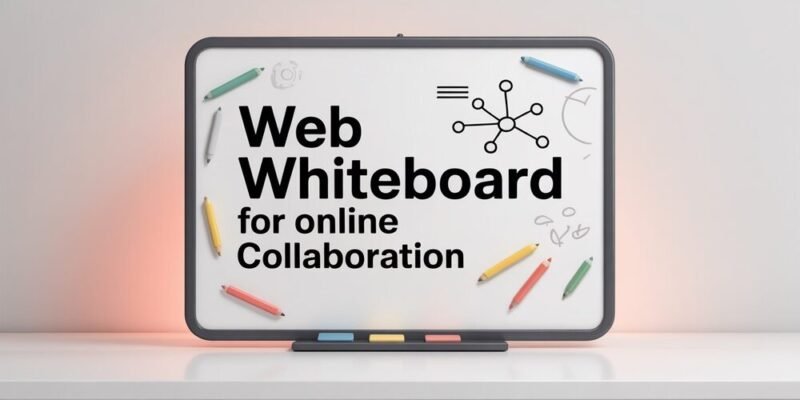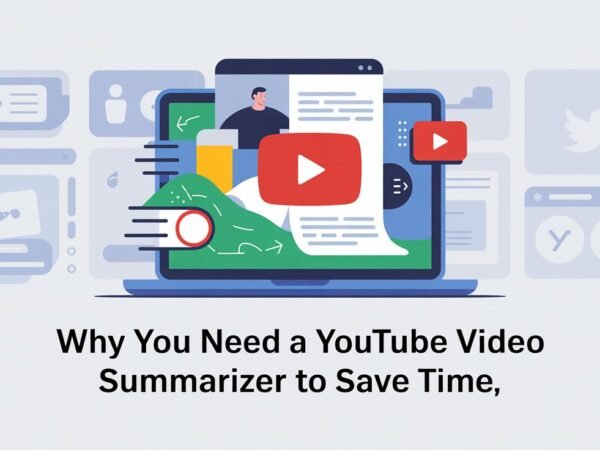Have you ever wished for a simple, effective way to collaborate visually with your team from anywhere? Web whiteboards make that possible, transforming how we communicate, brainstorm, and work together remotely. In today’s fast-paced digital world, teams rely on virtual tools for communication and collaboration. A web whiteboard replicates the traditional whiteboard experience with the added flexibility and power of the Internet. It enables real-time collaboration, enhances visual communication, and boosts productivity across distributed teams.
What Is a Web Whiteboard?
A web whiteboard is an online application or digital platform that allows users to draw, write, annotate, and collaborate visually in real time. Much like a traditional whiteboard in a meeting room or classroom, a web whiteboard is a shared space where ideas can be captured and explored. However, unlike physical whiteboards, web whiteboards provide the additional advantage of remote access, cloud storage, media integration, and multi-user interaction all within a browser or app.
Why Are Web Whiteboards Important?
Remote and hybrid work environments are now the norm, especially after the global shift caused by the COVID-19 pandemic. This new way of working highlighted the need for virtual collaboration tools that are efficient, easy to use, and universally accessible. Web whiteboards bridge the gap between distributed teams by:
- Encouraging spontaneous brainstorming sessions
- Allowing for visual project planning
- Supporting education and remote learning
- Facilitating interactive workshops and presentations
- Enhancing communication with visual context
Whether you’re an educator, developer, designer, manager, or student, web whiteboards provide a platform to think, share, and create collaboratively.
Key Features of Web Whiteboards
Most online whiteboard tools come with a robust set of features to support dynamic and interactive collaboration:
Real-Time Collaboration
Multiple users can simultaneously draw, write, move objects, and contribute from anywhere.
Infinite Canvas
Unlike traditional whiteboards that are limited by size, web whiteboards often offer infinite or expandable canvases to accommodate growing ideas and detailed project maps.
Text, Drawing, and Shapes
Users can input freehand drawings, typed text, arrows, sticky notes, flowcharts, and more.
Media and File Uploads
Images, PDFs, documents, and videos can be directly embedded onto the whiteboard.
Templates and Frameworks
Pre-built templates help structure meetings, design sprints, and strategy sessions quickly.
Cloud Integration
Boards are saved automatically in the cloud, enabling teams to revisit and build upon past sessions.
Permissions and Access Control
Admin users can set different roles, such as viewer, editor, or facilitator, to maintain structure and security.
Top Use Cases for Web Whiteboards
Team Brainstorming
One of the most common uses of a web whiteboard is to hold virtual brainstorming sessions. Teams use sticky notes, color codes, and mind maps to generate and organize ideas.
Project Planning
Web whiteboards, from Kanban boards to Gantt charts, support agile planning methods and visual task management.
Remote Education
Teachers and students use web whiteboards for lectures, quizzes, group work, and collaborative problem-solving, making learning more engaging and interactive.
UI/UX Design
Designers can use online whiteboards to build wireframes, gather feedback, and iterate quickly in real-time with stakeholders.
Workshops and Training
Facilitators use interactive boards to conduct webinars, training modules, and group activities in a lively and visually stimulating format.
Benefits of Using a Web Whiteboard
Enhanced Engagement
Participants stay more engaged when they can actively contribute by writing, drawing, or posting notes, rather than passively watching.
Improved Clarity
Visual aids help clarify complex concepts and relationships between ideas, especially in technical and design discussions.
Faster Decision-Making
Seeing everyone’s input laid out visually speeds up consensus-building and improves decision-making.
Asynchronous Collaboration
Team members in different time zones can contribute at their convenience, and the board retains all input for review later.
Eco-Friendly and Cost-Effective
No need for markers, paper, or physical space, just a browser and an internet connection.
Popular Web Whiteboard Tools
Some of the most widely used online whiteboard platforms include:
- Miro – Great for agile teams and enterprise collaboration
- Microsoft Whiteboard – Ideal for those already using Microsoft 365
- Jamboard (by Google) – User-friendly and cloud-integrated
- Ziteboard – Lightweight and simple
- Lucidspark – Designed for ideation and strategic planning
Advanced platforms like HKMLC Smart Whiteboards now integrate physical touch displays and cloud-based online whiteboarding features, creating a hybrid experience for in-office and remote teams.
How to Choose the Right Web Whiteboard
Not all web whiteboards are created equal. Here are some criteria to consider when choosing the right one for your needs:
Ease of Use
The interface should be intuitive for all users, including non-tech-savvy participants.
Real-Time Sync
Choose a platform with strong real-time collaboration capabilities to avoid lag or sync issues.
Security and Privacy
Ensure the platform offers end-to-end encryption and complies with data regulations like GDPR.
Integration
Look for tools that integrate seamlessly with your existing workflow apps, such as Slack, Zoom, Microsoft Teams, or Google Workspace.
Pricing
Most platforms offer freemium models. Assess your team size and feature needs before choosing a subscription plan.
Challenges and Limitations
While web whiteboards are incredibly useful, they come with a few challenges:
- Learning Curve: Some tools require onboarding and training for practical use.
- Internet Dependency: Connectivity issues can disrupt meetings.
- Input Limitations: Drawing with a mouse isn’t as fluid as using a stylus or touch screen.
- Data Overload: Boards can become cluttered without proper moderation.
Solutions like HKMLC Digital Whiteboards address these issues by providing high-resolution touch displays and seamless cloud-syncing capabilities that make writing and navigation as natural as using a physical board.
Tips for Effective Online Whiteboard Collaboration
Set Clear Objectives
Before you start, outline what you aim to achieve during the session to maintain focus.
Use Templates
Save time and ensure consistency using pre-designed brainstorming, planning, or teaching templates.
Designate a Facilitator
Assign someone to guide the session and keep contributions organized.
Encourage Participation
Use polls, emojis, and breakout activities to make sessions interactive.
Review and Export
Always summarize key takeaways and export the board as a PDF or image for documentation.
Future of Online Whiteboarding
The future of collaboration is hybrid, combining the best in-person and digital experiences. Innovations in virtual reality, AI-assisted brainstorming, and innovative hardware integration are already transforming web whiteboards into intelligent collaboration hubs. Expect features like:
- Real-time transcription
- Smart suggestions for layouts and workflows
- Augmented reality integration
- Voice command support
- Seamless mobile and tablet access
Companies and educators embracing these trends will benefit from increased efficiency, engagement, and quality of collaboration.
The Future of Collaboration
Web whiteboards have rapidly become indispensable tools for modern teams, educators, and creators. Their ability to combine the simplicity of a traditional whiteboard with the power of cloud technology makes them a must-have for any collaborative effort, whether designing a product, teaching a lesson, or conducting a remote workshop. By merging tactile, touch-based interactions with cutting-edge digital collaboration tools, these whiteboards offer the best of both worlds for today’s dynamic work environments. As the landscape of work and education continues to evolve, web whiteboards will remain at the heart of visual thinking, interactive learning, and effective team collaboration, shaping the future of how we work and learn together.
Do Read: Digital Identity Verification Made Easy with Ailleron’s eKYC













